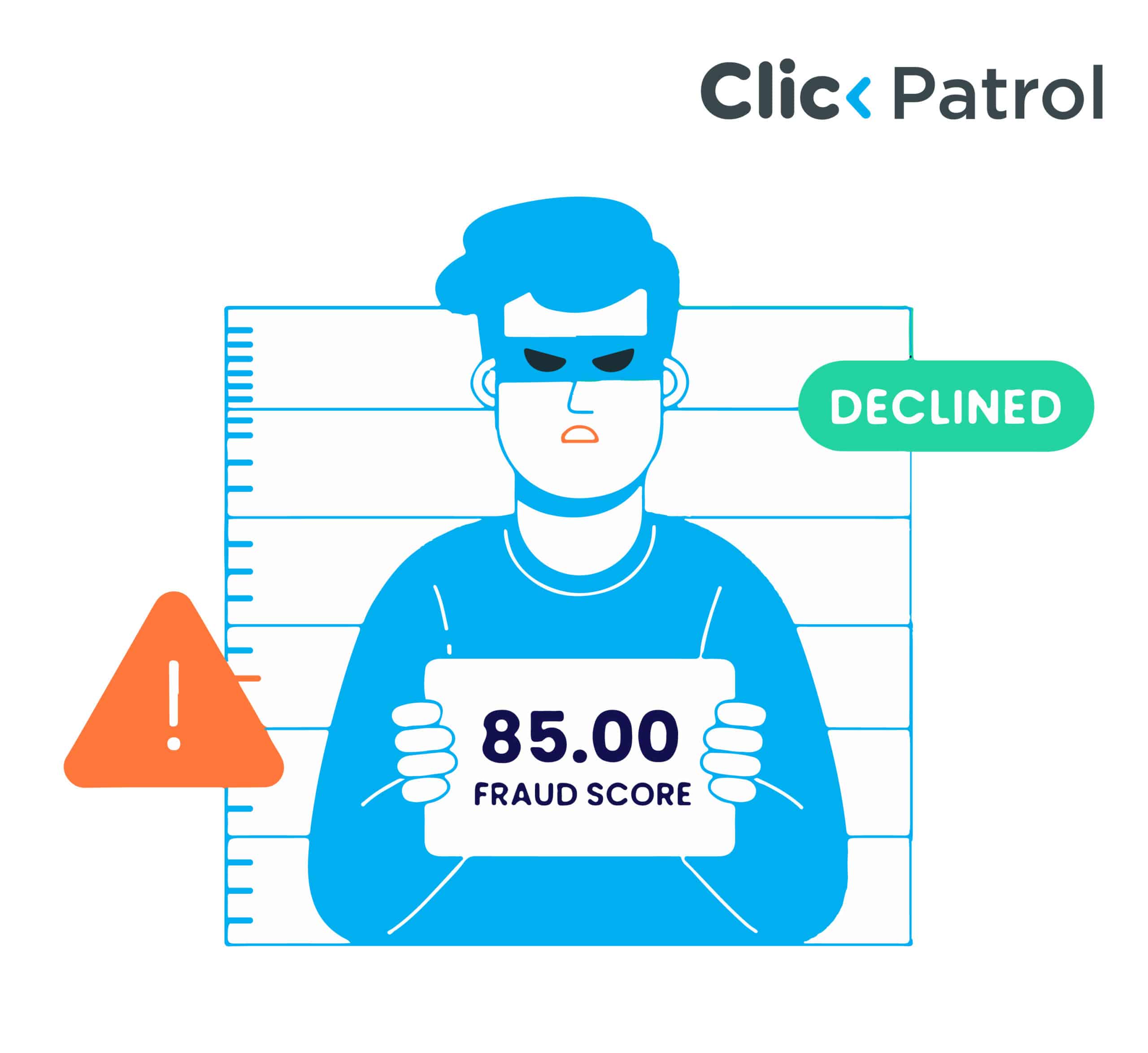
Ad fraud FAQs: How to detect, prevent, and combat click fraud effectively
Abisola Tanzako | Apr 25, 2025

Table of Contents
Digital ad fraud is expected to cost advertisers over $100 billion annually by 2024.
The digital advertising industry faces a significant issue of ad fraud, which costs companies billions of dollars annually while undermining the credibility of online marketing.
According to Statista, ad fraud costs are expected to increase from $19 billion in 2018 to $100 billion by 2025. Advertisers, publishers, and consumers need to understand the extensive world of digital advertising, which raises numerous questions regarding the definition of ad fraud.
How widespread is it? What are the available solutions to fight this problem?
This guide addresses the most frequently asked ad fraud FAQs, including how to detect, prevent, and select the right tools.
Understanding ad fraud FAQs: Definition and examples
Ad fraud manipulates ad metrics, such as clicks and impressions, to generate illegitimate revenue. Common tactics include bot-driven fake clicks, hidden ads, and fake publisher sites.
Fraudsters exploit advertisers’ trust, making ad fraud a significant concern for the industry.
Understanding its scope is the first step in combating it. Common types of ad fraud include Click Fraud, impression fraud, domain spoofing, ad stacking, pixel stuffing, and install fraud.
Examples of ad fraud FAQs in action
- Methbot (2016): A massive bot-driven ad fraud operation that stole an estimated $3–5 million per day by generating fake video ad views.
- HyphBot (2017): A botnet that used domain spoofing to trick advertisers into bidding for premium ad placements on fake websites.
Top 10 tools for ad fraud detection and prevention
The top tools for ad fraud detection and prevention include:
1. ClickPatrol: ClickPatrol is an advanced fraud detection tool that specifically focuses on identifying and blocking fraudulent clicks and bot traffic.
By monitoring the traffic in real-time, ClickPatrol ensures that advertisers are not wasting their ad budgets on non-genuine interactions.
It employs sophisticated algorithms to analyze user behavior and detect patterns that indicate fraudulent activity, such as click farms or automated bots.
2. IAS (Integral Ad Science): IAS leverages AI-driven fraud detection and advanced analytics to monitor ad impressions across digital platforms.
Its primary goal is to ensure that the impressions an ad receives come from actual human users, not bots or fraudulent sources.
The system analyzes vast amounts of data, including user behavior and contextual information, to detect patterns that indicate invalid impressions.
3. DoubleVerify: DoubleVerify is a comprehensive tool that monitors ad placements for various forms of fraud, ensuring brand safety and ad viewability.
By analyzing the environments where ads appear, DoubleVerify helps ensure that ads are shown in contexts that align with a brand’s values and target audience.
4. Moat by Oracle: Moat, part of Oracle’s suite of advertising solutions, is a powerful tool that tracks ad impressions and user engagement in real-time.
It focuses strongly on fraud detection and uses advanced analytics to monitor and analyze every ad impression, ensuring it is viewed by a real person and engaging the target audience.
5. Fraudlogix: Fraudlogix is an ad fraud detection solution that utilizes predictive analytics to identify and block various types of fraud, including bot traffic, fake clicks, and fraudulent impressions.
By continuously analyzing traffic sources and user behavior patterns, Fraudlogix can identify suspicious activities that indicate fraud, such as click farms or bots imitating user behavior.
6. Adjust: Adjust is a mobile attribution and fraud prevention platform that provides detailed insights into user behavior and prevents mobile ad fraud.
This tool focuses on detecting fraudulent activities such as fake app installs, click injection, and ad stacking, which can mislead advertisers into thinking their campaigns are performing better than they are.
7. AppsFlyer: AppsFlyer is a leading mobile attribution platform offering powerful fraud detection features.
By analyzing user behavior across various mobile ad networks, AppsFlyer helps prevent fraud, such as click spamming, fake installs, and other invalid traffic sources.
8. White Ops (HUMAN): White Ops, now rebranded as HUMAN, uses sophisticated behavioral analytics and machine learning to detect and block sophisticated bot attacks in real-time.
HUMAN identifies and mitigates various types of fraud, including bot-driven ad impressions, automated clicks, and fake traffic.
Its technology analyzes vast amounts of user data to identify patterns that indicate fraud and can quickly block bots before they interact with ads.
9. ClickCease: ClickCease is an ad fraud prevention tool that specializes in detecting and blocking click fraud, particularly for pay-per-click (PPC) campaigns, such as Google Ads and Facebook Ads.
It continuously monitors traffic sources and filters out invalid clicks, such as those generated by bots or malicious competitors, ensuring that advertisers only pay for genuine, human-driven clicks.
10. Anura: Anura is a fraud detection software solution that helps prevent invalid traffic (IVT) from affecting ad spend and analytics. Its platform is designed to detect and block both bot-driven traffic and human fraudsters who engage in deceptive practices, such as click fraud and impression fraud. It uses machine learning and behavioral analytics to identify suspicious patterns and filter out invalid traffic in real-time.
Real-world example: Uber’s fight against ad fraud
Uber discovered that a significant portion of its ad budget was wasted on fraudulent app installs generated by bots and click injection.
After analyzing its data, Uber identified several third-party ad networks that were delivering fake installations and severed ties with them.
The company also implemented fraud detection tools, such as AppsFlyer and Adjust, to monitor real user engagement and took legal action against fraudsters.
These efforts helped Uber save tens of millions of dollars, highlighting the importance of proactive ad fraud prevention.
Navigating the ad fraud challenge: Strategies for success
Advertisers face challenges that require tricky defense strategies, strong vigilance, and awareness.
The industry has already experienced $84 billion in losses for 2023, and predictions suggest these losses will reach $172 billion by 2028.
Bots, spoofing, and fake conversions attack advertisers and publishers alongside the broader digital environment, yet improvements, including AI-based discovery and blockchain confirmation systems, prove effective.
FAQs
Q. 1 What is click fraud?
Click fraud refers to fraudulent clicks on online ads, typically generated by bots or low-paid workers who intend to exhaust ad budgets without generating real conversions.
Q. 2 How does ad fraud impact ROI?
Ad fraud negatively impacts ROI by reducing the effectiveness of advertising campaigns and increasing costs, as businesses pay for non-genuine clicks or impressions that do not result in conversions.
Q. 3 What are the best tools for prevention?
Top tools for preventing ad fraud include ClickPatrol, PPCSecure, Lunio, and ClickGuard. These tools help detect and block fraudulent activities to protect ad budgets.
Q. 4 How to prevent ad fraud?
To prevent ad fraud, regularly monitor traffic sources, utilize advanced fraud detection tools, and set IP blocks to filter out invalid traffic, ensuring that only genuine users engage with your ads.





